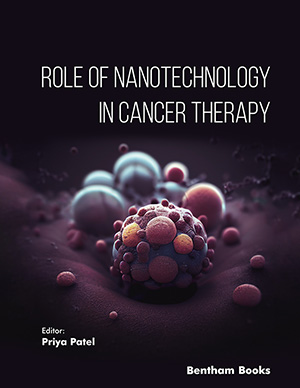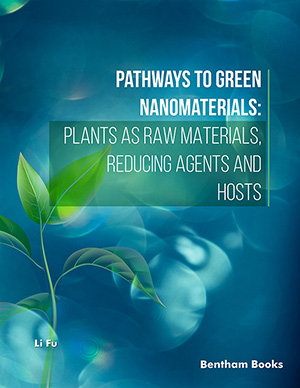Abstract
Iron oxide nanoparticles (IONs) are being used in medicine for magnetic resonance imaging, drug delivery and hyperthermia. There are contradictory data about cytotoxic effects of IONs on various cell lines. In this study a couple of IONs with two biocompatible coatings, L-lysine and 3-aminopropyltriethoxysilane, were synthesized by coprecipitation method in aqueous matrix and characterized. The MTT assay was used to evaluate the effects of the synthesised IONs on HepG2 cells. Cell culture illustrated that the growth of HepG2 cells can be promoted by IONs and nanoparticles with biocompatible coating have more biological benefit impacts than naked particles. By increase in concentration, cytotoxic effects will appear and reduce the growth promotion effects. Cytotoxic effects are in relation with agglomeration degree of nanoparticles, agglomeration can reduce cytotoxicity of IONs at high concentrations.
Keywords: Cytotoxicity, Fe3O4, L-lysine, 3-aminopropyltriethoxysilane, HepG2, MTT assay.
Current Nanoscience
Title:Impacts of Amine Functionalized Iron Oxide Nanoparticles on HepG2 Cell Line
Volume: 11 Issue: 1
Author(s): Alireza Ebrahiminezhad, Sara Rasoul-Amini, Amin Kouhpayeh, Soodabeh Davaran, Jaleh Barar and Younes Ghasemi
Affiliation:
Keywords: Cytotoxicity, Fe3O4, L-lysine, 3-aminopropyltriethoxysilane, HepG2, MTT assay.
Abstract: Iron oxide nanoparticles (IONs) are being used in medicine for magnetic resonance imaging, drug delivery and hyperthermia. There are contradictory data about cytotoxic effects of IONs on various cell lines. In this study a couple of IONs with two biocompatible coatings, L-lysine and 3-aminopropyltriethoxysilane, were synthesized by coprecipitation method in aqueous matrix and characterized. The MTT assay was used to evaluate the effects of the synthesised IONs on HepG2 cells. Cell culture illustrated that the growth of HepG2 cells can be promoted by IONs and nanoparticles with biocompatible coating have more biological benefit impacts than naked particles. By increase in concentration, cytotoxic effects will appear and reduce the growth promotion effects. Cytotoxic effects are in relation with agglomeration degree of nanoparticles, agglomeration can reduce cytotoxicity of IONs at high concentrations.
Export Options
About this article
Cite this article as:
Ebrahiminezhad Alireza, Rasoul-Amini Sara, Kouhpayeh Amin, Davaran Soodabeh, Barar Jaleh and Ghasemi Younes, Impacts of Amine Functionalized Iron Oxide Nanoparticles on HepG2 Cell Line, Current Nanoscience 2015; 11 (1) . https://dx.doi.org/10.2174/1573413710666140911224743
| DOI https://dx.doi.org/10.2174/1573413710666140911224743 |
Print ISSN 1573-4137 |
| Publisher Name Bentham Science Publisher |
Online ISSN 1875-6786 |
Call for Papers in Thematic Issues
Role of nanomaterials in fabrication of coatings, Machining and Joining
The application of nanoscience has brought about a revolution in the field of mechanical engineering by providing novel materials, boosting manufacturing processes, and generating cutting-edge products. The purpose of this special issue is to investigate the enormous impact that nanoscience has had on mechanical engineering, with a particular emphasis on ...read more
Advanced Inorganic Nanocomposites and Their Emerging Applications
This special issue collection will highlight developments on the recent trends about the synthesis of metal oxides, nanoclusters, biomaterials, 2D nanomaterials, nanocrystals, nanocomposites, etc. and their applications in electrochemical systems, tissue regeneration, energy storage and harvesting, sensors, etc. The novelty of the methods in the chemical synthesis and their characterizations, ...read more
Applicability of Nanotechnology for Performance Enhancement of Clean Energy Technologies
Population growth, industrialization, and improvement in living quality would lead to further increase in energy demand in near future. Regarding the disadvantages of fossil fuels such as fluctuations in their price, high emissions of greenhouse gases and restriction of their sources, it is crucial to use and exploit alternative energy ...read more
Graphene and 2D Materials for Energy Storage and Conversion
This thematic issue will discuss the recent advances in graphene-based nanomaterials for different energy technologies. Graphene possesses a high surface area, and stable structure and exhibits many interesting electronic, optical, and mechanical properties due to its 2D crystal structure. Graphene is of both fundamental interest and suitable for a wide ...read more
Related Journals
 40
40 6
6
- Author Guidelines
- Graphical Abstracts
- Fabricating and Stating False Information
- Research Misconduct
- Post Publication Discussions and Corrections
- Publishing Ethics and Rectitude
- Increase Visibility of Your Article
- Archiving Policies
- Peer Review Workflow
- Order Your Article Before Print
- Promote Your Article
- Manuscript Transfer Facility
- Editorial Policies
- Allegations from Whistleblowers
Related Articles
-
Pyrazole Derivatives as Antitumor, Anti-Inflammatory and Antibacterial Agents
Mini-Reviews in Medicinal Chemistry Large-scale Investigation of Long Noncoding RNA Secondary Structures in Human and Mouse
Current Bioinformatics Matrix Metalloproteinases as Potential Targets in the Venous Dilation Associated with Varicose Veins
Current Drug Targets The Dendritic Cell-T Cell Synapse as a Determinant of Autoimmune Pathogenesis
Current Pharmaceutical Design Update on Hsp90 Inhibitors in Clinical Trial
Current Topics in Medicinal Chemistry New Insights on the Antitumoral Properties of Prodiginines
Current Medicinal Chemistry Imidazoles and Benzimidazoles as Tubulin-Modulators for Anti-Cancer Therapy
Current Medicinal Chemistry Experimental Onco-Immunology Revisited
Current Cancer Therapy Reviews Natural Plant Extracts as Potential Therapeutic Agents for the Treatment of Cancer
Current Topics in Medicinal Chemistry Role of Aberrant Lipid Metabolism of Cancer Stem Cells in Cancer Progression
Current Cancer Drug Targets Terpenes with Antitumor Activity: A Patent Review
Recent Patents on Anti-Cancer Drug Discovery Targeting Tumors with Small Molecule Peptides
Current Cancer Drug Targets Mitochondria-Targeting Therapeutic Strategies for Overcoming Chemoresistance and Progression of Cancer
Current Medicinal Chemistry Potential Anticancer Properties of Bisphosphonates: Insights From Preclinical Studies
Anti-Cancer Agents in Medicinal Chemistry Prediction by Pharmacogenetics of Safety and Efficacy of Non-Steroidal Anti- Inflammatory Drugs: A Review
Current Drug Metabolism Editorial (Thematic Issue: Improving Cancer Clinical Research and Trials with Hispanic Populations: Training and Outreach Efforts Between Moffitt Cancer Center and the Ponce School of Medicine)
Reviews on Recent Clinical Trials Suicidal emperipolesis: a process leading to cell-in-cell structures, T cell clearance and immune homeostasis.
Current Molecular Medicine New Insights Into Biology of Chronic Myeloid Leukemia: Implications in Therapy
Current Cancer Drug Targets SAR, QSAR and Docking of Anticancer Flavonoids and Variants: A Review
Current Topics in Medicinal Chemistry Emerging Role of GPR30/GPER1 in Skeletal Metabolism
Immunology, Endocrine & Metabolic Agents in Medicinal Chemistry (Discontinued)























